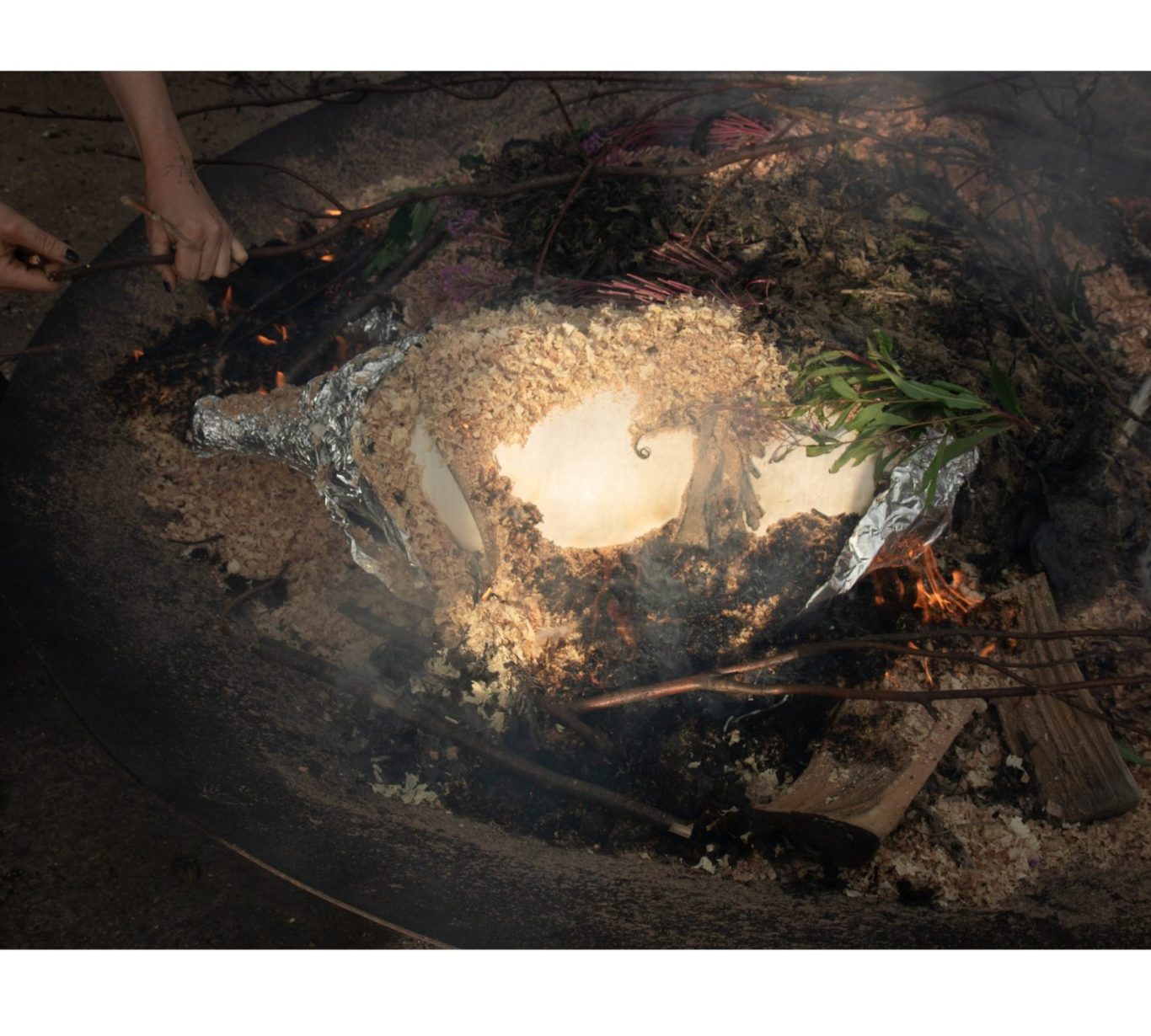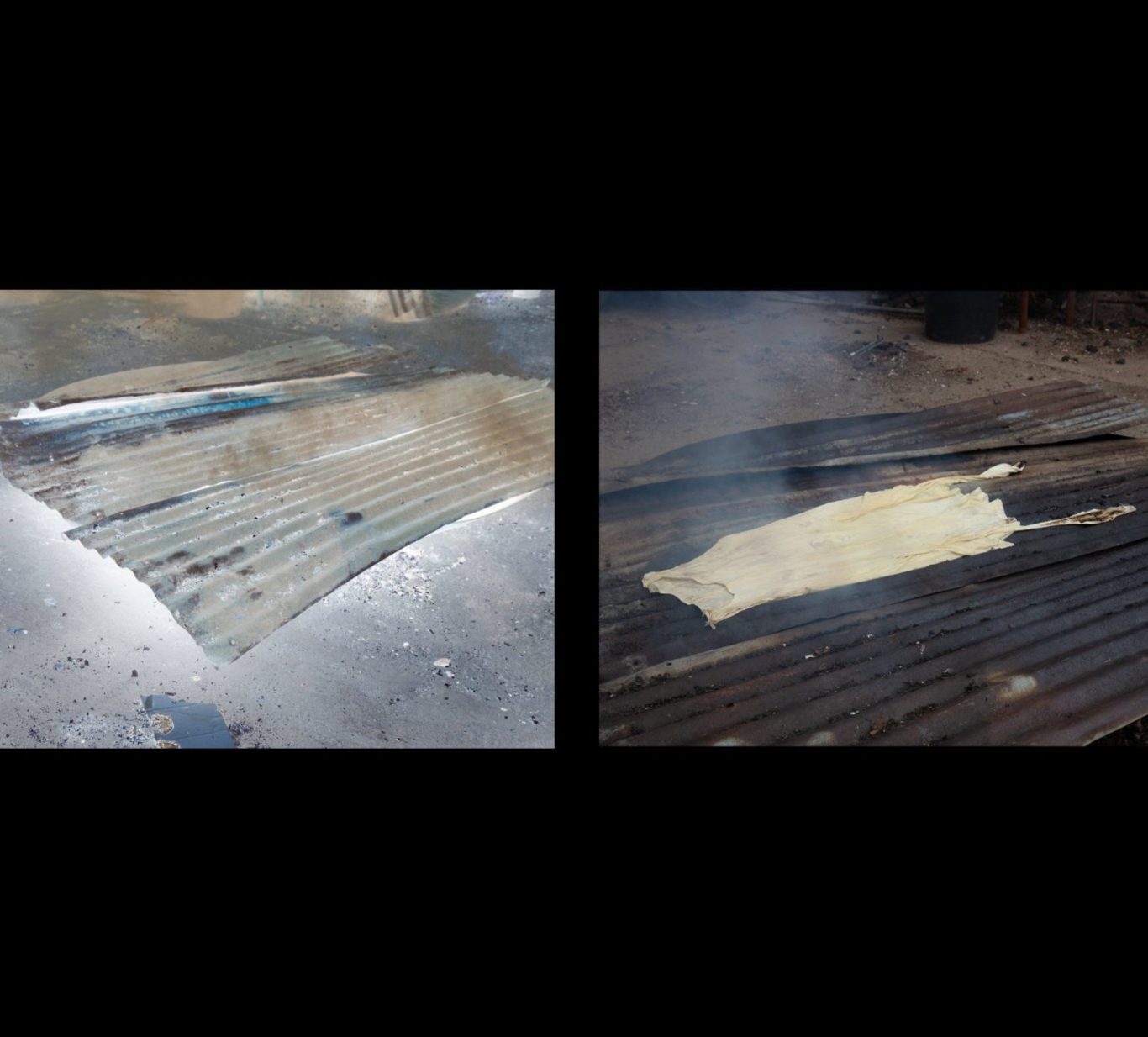Study in Silk, Smoke and Clay
This project investigates the use of smoke to transform the surfaces of silk and clay. Both pots and clothes are vessels - for storing foods, liquids, and treasured items, or for protecting and decorating human bodies. The vessels that we surround ourselves with tell a story about our culture, our personal tastes, and the landscapes we live in. We capture our own personal landscapes through these vessels.
Through the use of natural materials such as seaweed, manure, fruit skins, plants and coffee, the surfaces of the vessels are marked by smoke lashings. The markings on each vessel are serendipitous and unique, often unexpected. This series of paired works - pots and clothes - were coloured by the same fires. The silk nestled inside clay, or stained using ash collected from the fire's aftermath. We look towards future possibilities of bringing clay and cloth together, in conversation with each other and with the local environment.

Vessels were draped in organic materials such as seaweed, then wrapped in aluminium foil 'saggars'. The 'saggar' creates a reduction atmosphere, trapping the smoke and enhancing the effect on the surface of the vessel.

Anthropologist Elizabeth Fisher observed that 'the first cultural device was probably a recipient,' such as a pouch, net, or gourd, rather than an implement of violence (i.e. the spear). Her observation illustrates the importance of the vessel, both as a practical holder of things and a symbol of human endeavour (1979). The process of smoke firing feels like an homage to the vessel - there are vessels in vessels, since the saggar holds the vase and is in turn held in a bed of sawdust within the fire. The fire was lit in another vessel, a giant foundry bowl previously used to keep molten metal flowing.

Once hot, the fire was shrouded in corrugated iron to contain the smoke. After wetting the silk with soya milk to protect it, Sam laid the garment on top of the iron, branding it with markings from the heat.

The fire simmered for 8 hours until little remained but ash and pots. Some of the saggars had burnt away revealing the blackened surfaces of the clay. Where gelatinous kelp had covered the pot, a ghost imprint remained. Inside the vessels the silk had turned the colour of fire - flashes of orange and yellow, tinged with soot.

On the second day a charcoal incinerator was used to fire the tallest vessel. The vessel was placed inside the incinerator on a mesh litter. The fire raged very hot, contained by the insulated shell.

Smoke firing by its nature is unpredictable. There is no digital controller measuring the temperature, no glaze made from commercially manufactured materials. You are making a pact with the fire, and must relinquish control.
© Copyright. All rights reserved.
Zoe Slater Ceramics offers handcrafted pottery, contemporary tableware, and large-scale ceramic sculpture from studios in Glasgow and London. Working with wild clay, experimental glazes, and a blend of traditional and digital techniques, Zoe creates bespoke ceramics for restaurants, hotels, and public spaces — including custom tableware sets and wall-based ceramic installations for foyers and interiors. In addition to commissions, Zoe teaches ceramics workshops in Glasgow and London, sharing skills in wheel throwing, 3d printing with clay, and alternative firing techniques.
We need your consent to load the translations
We use a third-party service to translate the website content that may collect data about your activity. Please review the details in the privacy policy and accept the service to view the translations.
